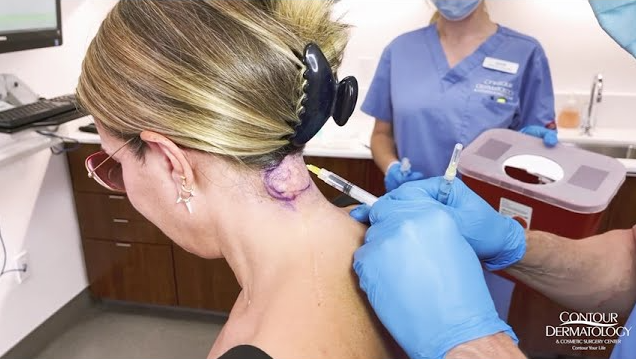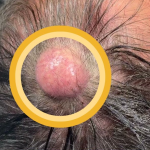Pharmacy creams for acne marks
Please scroll down to watch the video.👇👇
Many people turn to pharmacy (over-the-counter or OTC) creams to treat acne marks , also known as post-inflammatory hyperpigmentation (PIH) — those dark spots left behind after acne heals.
Let’s go through the most effective pharmacy-available creams and ingredients , how they work, which ones are best for different skin types, and what to look for on labels — all backed by dermatology research and clinical evidence.
🧠 First: Know the Difference Between Acne Marks vs. Scars
Acne Marks (Post-Inflammatory Hyperpigmentation – PIH):
Flat, dark spots (brown, red, or purple).
Not true scars — just excess pigment.
Fade over time with proper care.
True Acne Scars:
Textural changes in skin (raised or indented).
Require professional treatments like lasers or microneedling.
Don’t fade on their own.
This guide focuses on acne marks (PIH) , which can be treated effectively with pharmacy creams.
✅ Top Pharmacy Creams & Ingredients for Acne Marks
1. Hydroquinone (HQ) – The Gold Standard
How it works: Inhibits melanin production (the pigment that causes dark spots).
Available as:
2% OTC (Over-the-counter)
4% Prescription
Best for: All skin tones, especially lighter skin tones.
Timeframe: 4–12 weeks
Popular Brands:
Eucerin Even Tone Spot Corrector
Murad Rapid Age Spot and Pigment Lightening Serum (contains HQ + retinol)
⚠️ Caution : Long-term use (more than 3 months) may cause irritation or ochronosis (darkening of skin). Use only short-term and under guidance if needed.
Source: Passeron T, Ortonne JP. What is the mechanism of action of hydroquinone? Pigment Cell Melanoma Res. 2005;18(6):430–431.
2. Azelaic Acid
How it works: Mild exfoliant + anti-inflammatory + tyrosinase inhibitor (reduces pigment production).
Available as:
10–20% cream/gel (OTC)
Prescription-strength (Finacea, Azelex)
Best for: Sensitive skin, rosacea-prone skin, and darker skin tones.
Timeframe: 6–8 weeks
Popular Brands:
The Ordinary Azelaic Acid Suspension 10%
Paula’s Choice 10% Azelaic Acid Booster
Source: Dreno B, et al. Azelaic acid 15% gel in the treatment of postinflammatory hyperpigmentation. J Eur Acad Dermatol Venereol. 2008;22(5):566–572.
3. Kojic Acid
How it works: Natural fungal byproduct that inhibits melanin synthesis.
Available as: Serums, creams, and toners (often combined with other actives).
Best for: Light to medium skin tones.
Timeframe: 4–12 weeks
Popular Brands:
Maevis Ultra Brightening Serum
SkinMedica Lytera 2.0 Pigment Correcting Serum
⚠️ Caution : Can be irritating or sensitizing at high concentrations.
Source: Habbema L, et al. Kojic acid applications in cosmetic and medical dermatology. Clin Dermatol. 1996;14(1):65–70.
4. Arbutin (Alpha & Beta Forms)
How it works: Natural derivative of hydroquinone; gentler alternative.
Available as: Serums and creams.
Best for: All skin tones, especially sensitive skin.
Timeframe: 6–12 weeks
Popular Brands:
The Ordinary Alpha Arbutin 2% + HA 5%
Drunk Elephant C-Firma Day Serum (contains arbutin + vitamin C)
Source: Maeda K, Fukuda M. Arbutin: mechanism of its depigmenting action and its safety profile. J Pharmacol Sci. 2004;95(3):300–303.
5. Niacinamide (Vitamin B3)
How it works: Inhibits melanosome transfer, reduces inflammation, strengthens skin barrier.
Available as: Toners, serums, moisturizers.
Best for: All skin types, especially oily or sensitive skin.
Timeframe: 4–8 weeks
Popular Brands:
The Ordinary Niacinamide 10% + Zinc 1%
Paula’s Choice 10% Niacinamide Booster
Source: Draelos ZD. The effect of 2% niacinamide on facial seborrhea. J Cosmet Dermatol. 2005;4(2):142–145.
6. Vitamin C (L-Ascorbic Acid)
How it works: Antioxidant that inhibits tyrosinase and brightens skin tone.
Available as: Serums, creams, ampoules.
Best for: All skin tones, especially dullness + pigmentation.
Timeframe: 4–12 weeks
Popular Brands:
SkinCeuticals C E Ferulic
The Ordinary Ascorbyl Glucoside Solution 12%
Source: Telang PS. Vitamin C in dermatology. Indian Dermatol Online J. 2013;4(2):143–146.
7. Retinoids (Adapalene, Retinol)
How it works: Speeds up cell turnover, fades pigmentation, improves texture.
Available as:
0.1% Adapalene Gel (Differin – now OTC)
Retinol-based creams (e.g., The Ordinary Retinol 1% in Squalane)
Best for: All skin types, but start slow if you have sensitive skin.
Timeframe: 6–12 weeks
Note: Use at night, and always wear sunscreen during the day.
Source: Leyden JJ, et al. Why Topical Retinoids Are Mainstay Therapy for Acne. Dermatologic Therapy, 2017;30(6):e12470.
8. Alpha Hydroxy Acids (AHAs)
Examples: Glycolic acid, lactic acid
How it works: Exfoliates dead skin cells, accelerates turnover, lightens pigmentation.
Available as: Toners, peels, masks
Best for: Normal to oily skin
Timeframe: 4–8 weeks
Popular Brands:
The Ordinary Glycolic Acid 7% Toner
Paula’s Choice 8% AHA Gel Exfoliant
Source: Alexiades-Armenakas MR, et al. The spectrum of laser and light treatments for acne vulgaris. Lasers Surg Med. 2008;40(2):81–90.
🛡️ Tips for Using Thes
There are many effective pharmacy creams for acne marks , and most people see noticeable improvement within 6–12 weeks of consistent use. It’s all about finding the right combination for your skin type and being patient!


